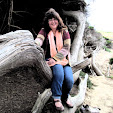Pope Benedict turns his back on new rituals
Pope Benedict celebrated parts of Sunday's Mass with his back turned on the congregation, reintroducing an old ritual that was phased out decades ago.
The Pope used the Sistine Chapel's ancient altar, set right against the wall under Michelangelo's dramatic depiction of the Last Judgment, instead of a mobile altar which allowed his predecessor, John Paul II, to face the congregation.
A statement by the Vatican's office for liturgical celebrations said it had been decided to use the old altar, where ballots are placed during papal elections, to respect "the beauty and the harmony of this architectural jewel".
That meant that for the first time in this kind of celebration since the Second Vatican Council, between 1962 and 1965, the Pope occasionally turned his back on the faithful and faced the Cross.
The pontiff is slowly reintroducing some of the rituals phased out after Vatican II, which modernised the Church and ordered that local languages be used instead of Latin.
In another nod to traditionalists, he has said he would like the centuries-old Gregorian chant to be more widely used.
During the Mass, the Pope also baptised 13 babies, pouring water on their heads from a golden shell.
There was a brief panic when the pontiff realised that he had lost his papal ring, which an aide found near the altar.
Monday, January 14, 2008
Subscribe to:
Post Comments (Atom)



2 comments:
i am so sad when critics interpret this posture as "turning one's back on the people"...he is leading us in reverent worship when he does this.
Yes, I agree that it is sad when this particular posture is seen as 'turning one's back on the people', and I have found that some people are particularly sensitive to this. Yet, having gone to Divine Liturgy many times, wherein the priest is facing the same direction as the congregation for the majority of the Liturgy, I quite honestly barely noticed, though I am a Roman Catholic and grew up with that Liturgy. In fact it made the times when the priest turns to face us (to read the Gospel and give a homily, or to give a blessing for example) seem much more meaningful. First, I realized that there are specific moments when we, the faithful in the congregation are being addressed. The Word of God is proclaimed to us in the Readings and we speak together as the People of God in the Psalm, just as when they were first sung to express our (man's) relationship to God, as well as what is happening in our lives, good and bad. The Gospel of course is properly read by the Priest, who alone acts 'in Persona Christi' when he celebrates the Mass, but again it is Jesus, the Son of God, speaking to us, and of course the homily is supposed to help explain the readings, as well as help us see how they apply to our lives. I came to see the Liturgy a bit like an interactive dialogue, either one between Master and disciple, or, perhaps more properly as children with their Father. In this case we are following The Son, Jesus, who as the 'Word of God' proclaims to us all the Father wants us to know for our salvation in the Liturgy of the Word, and then offers himself to the Father for our salvation.
The Second thing I realized is that having those times when the priest turns to face the congregation, and the times when he and the congregation are facing the same direction brings into sharper focus perhaps the greatest point and purpose of the Liturgy. And this is that the Priest, together with the congregation are addressing God, giving worship, and offering prayers of petition, thanksgiving, intercession, to name a few, but the point is that the Priest and the people are addressing God, not each other at those moments, and so it seems more proper for them to be facing the same direction.
Post a Comment